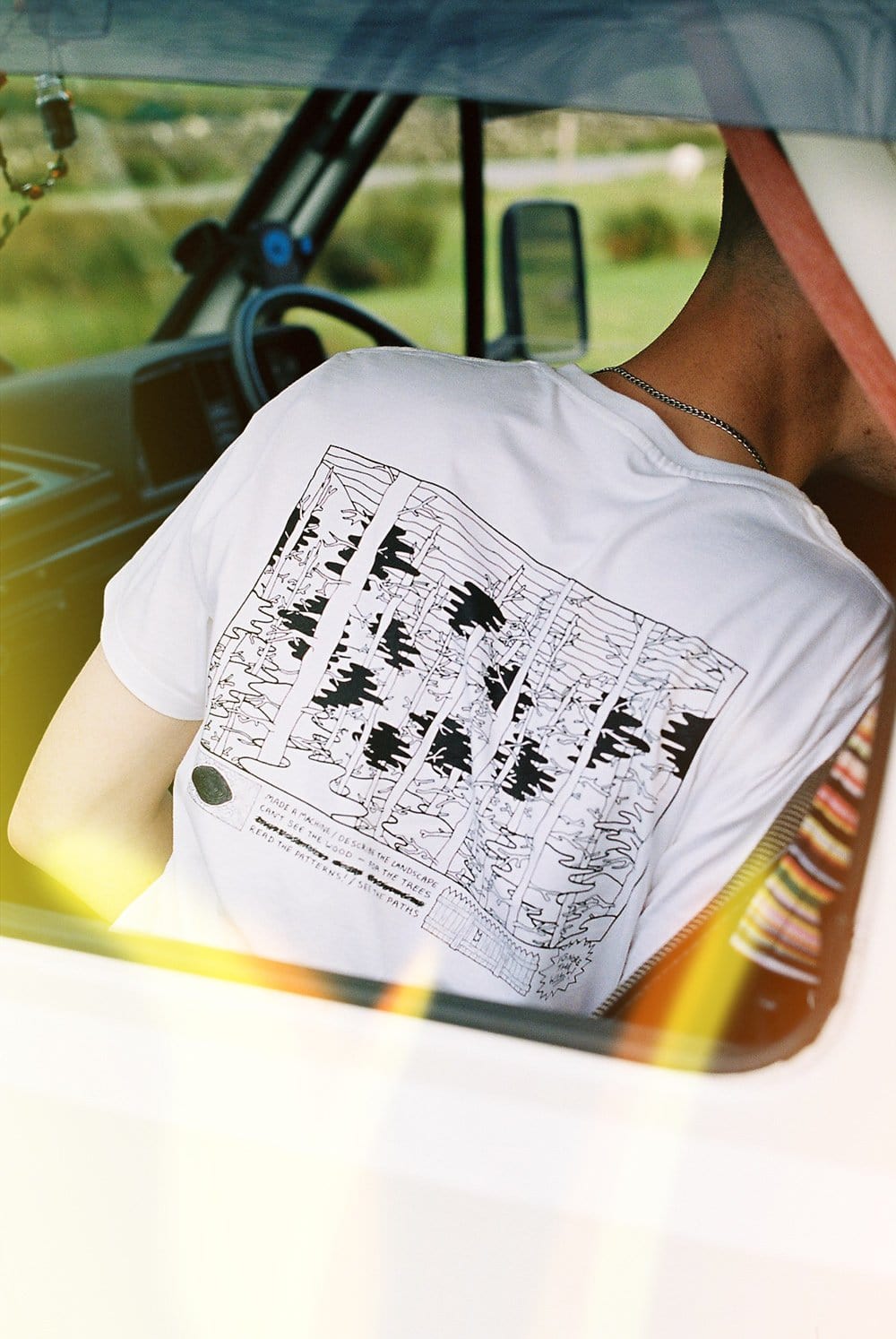IN FOCUS | AW19 Graphic Tees


Now you’ve had some time to take in the awesomeness of the AW19 collection, let us take you deep into the forest made up of our ‘Can’t See the Wood’ pieces.
For the first instalment of our ‘In Focus’ series, we are going to shed some light on the key aspects of our graphic tees. So sit back, grab a beverage of your choice and let us take you on a wonderful journey.
Organic Cotton
Let’s start with the main component of the tees, the cotton. This isn’t just any cotton, this is M&S cotton (haha good one!). On a serious note, the cotton we’re using is 100% Organic. The reasons for this are pretty important. Firstly, to produce a standard cotton T-shirt it requires around 2,700 litres of water. Given that cotton is usually grown in areas of water scarcity, intense irrigation (diverting water from sources to farmland) is required. Irrigation has had devastating effects and is largely to blame for the drying of the Aral Sea (see for yourself below). When referring to the Aral Sea, we’re not talking about a body of water the size of a garden pond, this was once the 4th largest inland lake in the world.

Irrigation leads to the flooding of farmland leaving a salt residue in the ground and surface water. Coupled with the harmful chemicals used to treat cotton crops, one cotton harvest can render the land unfarmable. Conventional cotton farming is accountable for 16% of the world’s insecticide use and 7% of pesticide use. Doing so not only impacts the environment, but is equally toxic for people living in cotton-growing areas. Residues from pesticides and insecticides have been found in the rainwater of a Brazillian cotton region. Such chemicals have been known to cause miscarriages, ADHD and various forms of cancer.
One final note on the devastating impact of traditional cotton farming before we have you in tears and you leave before getting to the exciting part of the article. FORCED LABOUR!. Can you believe that in the year 2019 slavery still exists!? It is especially prevalent in Turkmenistan, where farms supply cotton for numerous high street brands. To make matters worse, children make up a proportion of the labour force in these areas. We could talk at length about the other devastating stories that emerge from factories in Asia who work for the fast fashion brands that dominate our high streets, but we’ll save that for another day. Getting back to the point here though, using organic cotton negates the need for forced labour by paying farmers a fair wage and making working conditions as safe as possible.
We pride ourselves on being as transparent and environmentally-friendly as possible. A great deal of research goes into the materials and methods used to create these beautiful products. Given that cotton forms the basis of almost every garment we design, it seems fitting to start with the right foundation. The farming of organic cotton requires close to 90% less water as it is 80% rain-fed. Our cotton factory in India goes the extra mile too, by using renewable energy to produce the cotton in our garments. Each worker in the factory is paid the living wage, signs a legally binding contract, works in a healthy and safe environment for a fair number of hours, and is free to join a union.
Water-based Inks
So, the rant about cotton farming is over (for now). Let’s move onto the next chapter of this magical mystery graphic t-shirt tour. We’ve got an inkling that you’ll like this one (haha very punny!).
We told you that our attention to detail knows no bounds and we weren’t kidding. We exclusively use water-based inks for our screen prints. The screen printing method itself is durable, gives the colours a rich texture and highlights the details of our designs. Water-based inks sit deeper within the fabric and provide greater definition than their arch nemesis, plastisol inks. Most plastisol inks contain plasticisers and harmful cleaning products are required for the screens once they are used. To add to this, they leave a horrible layer on top of the garment rather than seeping into the fabric. This layer is prone to cracking, so not only are plastisol inks harmful but they don’t last as long.
(‘inkredible’ stuff)
Meaningful Graphics
If you’ve got to this point without tears welling up in your eyes then you probably need to go and get your tear ducts checked out because that was some hard-hitting content. Seriously though, fair play, because now you’re going to find out the true meaning of the designs...
See The Wood
First up, the title design from the collection. In our previous post, we shared detail about the Can’t See the Wood collection inspiration, This time our resident graphic designer (and co-founder) Andrew, has provided us with details on the meaning behind the graphics. He says ‘See the Wood’ means to learn from the past to find a clear path for the future. As we mentioned in the last post, ‘Can’t See The Wood’ - is about being too focused on finer details, so the ‘See The Wood’ graphic is encouraging you to zoom out and see the bigger picture.

CANDLE CLIMB
The second is Candle Climb. Again, Andrew has enlightened us on the meaning of this one. The graphic represents the cost of progress and the fact that as we go up, we also go down. As the candle burns, it melts, turning to wax. So, as it grows, it actually shrinks. Sometimes growing is detrimental to yourself, those around you and the environment. We all have to learn when enough is enough.

DISPLACED
Perhaps the most pressing issue alluded to in the graphic designs is that of habitat displacement. We want to highlight that the destruction of the environment and the habitats within it comes at a cost to someone or something. What’s the value of one life over another? This is a message that doesn’t just relate to the environment. One only has to look at the refugee crisis or border enforcement worldwide to notice how we actively value some human lives over others.

In a similar vein to the inspiration behind the entire collection, out of destruction comes beauty (like a rainbow you know?). We think these are pretty wicked, and we hope you do too. So we hope you look at them with even greater admiration, maybe you’ll even buy one. I mean you must be pretty keen if you actually got to this point. I wish there was a prize for getting this far. There isn’t, I’m afraid.



